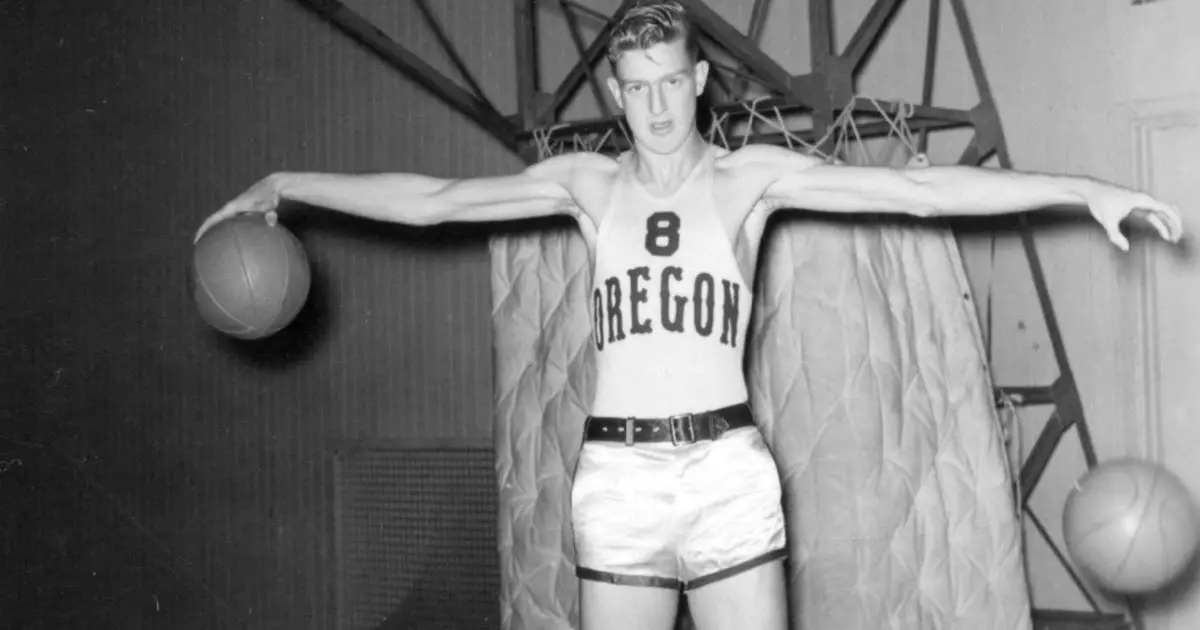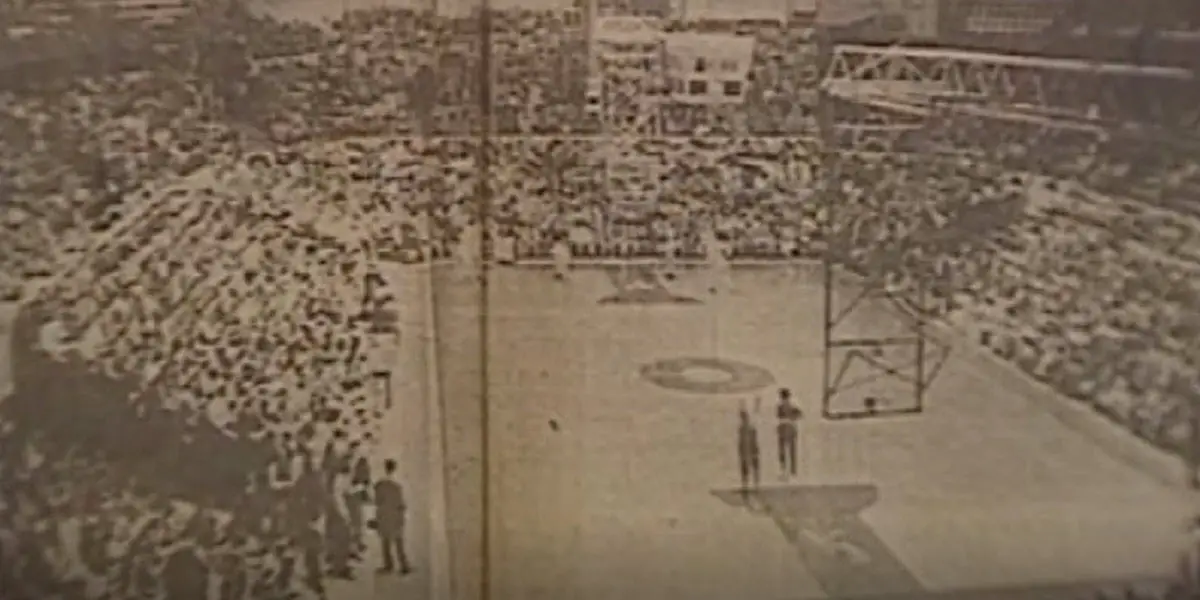Entering the 1944-1945 basketball season, the Webfoots—as the Ducks were then known—were expected to field an inexperienced team that would dwell in the cellar of the Pacific Coast Conference’s Northern Division.
Late 1944 was a momentous time. Not only was World War II raging in Europe and Asia, but here in the United States we had a presidential election pending. Locally, if you wanted to see a movie, you could choose from a variety of theaters. “Cry Havoc,” which frequently shows up on Turner Classic Movies, was playing at the State Theater, and a double feature at the Rex Theater featured Boris Karloff and Bela Lugosi.
World War II had created havoc with college athletics, with travel restrictions forcing many colleges to cancel various varsity sports. (Does this sound familiar?) Oregon was no different, as the Ducks had to cancel two football and baseball seasons due to a lack of players. However, Oregon continued to field a basketball team throughout the war, although sapped of a portion of its usual talent. (Perhaps this offers some perspective to what is occurring now?)
Howard Hobson had been Oregon’s head basketball coach through the 1943-1944 season but left afterword to help with the war effort. (Hobson would return for two more seasons as head coach after the war before ultimately departing for Yale.) With Hobson gone, Oregon appointed long-time assistant coach John Warren as the new head coach. (Warren would again serve as head coach after Hobson’s departure for Yale.)

Ken Hayes palming the basketball for as long as possible!
The Webfoots initial starting lineup was expected to consist of one returning letterman, a transfer, two freshmen, and a player who had missed the previous season because of injury. Opening the season was a lineup consisting of center Ken Hays, forwards Jim Bartelt and Del Smith, and guards Bob Hamilton and Lou Kotnik. As the season progressed, other key players emerged, including Reedy Berg, Ed Allen, and Dick Wilkins. Wilkins would become one of the top scorers in the country that season as a freshman. A multi-talented athlete, Wilkins was later a key player on the 1948 football team that went to the Cotton Bowl.
Oregon would open the season with a two-game series against the Seattle Coast Guard. The Guardsmen were led by player/coach Ted Sarpola, a one-time Webfoot. As expected, the Webfoots lost both games—the Guardsmen were all experienced former college players—but things would get better. After a 22-game non-conference schedule against exclusively military teams, the Webfoots moved into conference play.
Oregon marched through the conference schedule nearly unscathed, however, they finished that schedule tied with Washington State. The tie necessitated a three-game playoff with the Cougars, with the first game resulting in an Oregon victory in Pullman. The action then moved to the Igloo (MacArthur Court), where Washington State would take the second game. Our Beloved Ducks would prevail in the series as they came back to take the third game in a 39-37 thriller.

The “Igloo,” Mac Court!
With the playoff victory over the Cougars, Oregon was on its way to Kansas City for the NCAA West Regionals, and there were far fewer teams in March Madness in those days. Oregon opened against Arkansas, losing 79-76 in a shootout (This score set tournament records at the time.) In the consolation game, Oregon beat defending NCAA champion Utah for an impressive third-place finish to a season of surprise by this plucky-Duck team.
The stars of this team were ultimately recognized as Dick Wilkins and Bob Hamilton, both named All Pacific Coast Conference players, though for this lightly-regarded team to remarkably outperform expectations there were undoubtedly additional factors at play, including exceptional teamwork.
This would be Oregon’s last NCAA Tournament appearance until the early 1960s, and like so many of the special and surprising Oregon teams that appear from time time, we fans have to savor them while we can, both today and looking back in time.
Jim Maloney
Ellensburg, Washington
Top Photo by UO Library Special Collections

Brad Nye, the FishDuck.com volunteer editor for this article, conserves land for Deschutes Land Trust in Central Oregon.
Related Articles:
Jim currently resides in Ellensburg, Washington where he has had the opportunity to watch former Ducks such as NaDerris Ward and Scott Grady play for Central Washington University, Jim’s alma mater. However, Jim was born in Eugene and attended Howard Elementary School, and what then called Colin Kelly Junior High School before moving to Washington. Jim began following the Ducks during the 1957 season and had the opportunity to watch a number of games at Hayward Field. Over the years, Jim has developed a wealth of knowledge about Oregon sports history. When not editing on Fanbase.com or working in his garden, Jim manages to find time to practice law.


